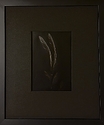Trask
Subscriber
There was a thread in January about possible uses for Ammonium Chloride: https://www.photrio.com/forum/threads/ammonium-chloride.180780/page-2
In the discussion I noted that in a the book “The Nikon Manual: A Complete Handbook of 35mm Technique” (1957) I’d come across guidance on adding ammonium chloride to D-76, halving the film’s ISO, and doubling the normal D-76 development time, thereby “causing D-76 to behave partly as a physical developer; silver dissolved from the emulsion by the sodium sulfite is redeposited on the developing image a exceedingly minute particles and the (medium-speed film) negative will be virtually grainless.”
Looking around further on the web to find other examples of using ammonium chloride in a B/W developer, I came across Kodak patent 2,053,516 from 1936. In the patent Kodak presents 6 formulae where the ammonium chloride is added to variations on a standard D-76-like formula, some with sodium sulfite at 100g/liter or 35g/l or 60g/l, some with or without potassium bromide to reduce fog. So far so good — but looking closer I realized that in four of the six cited formulae, there is twice as much metol as hydroquinone — 5g metol and 2.5g HQ — and I’m curious as to why Kodak would have done that? What would be the advantage(s) of moving from the standard (well, maybe not yet standard in 1936) 2.5g metol and 5g HQ to a reversal a reversal? I note that in the two formulae that are “standard” there is no KBr used, whereas in the four formulae that are 5g Metol/2.5g HQ KBR is used at 1g/l or 0.5g/l.
Any thoughts on what Kodak was thinking? I think it’s clear that Kodak wouldn’t seek to create and patent a formula unless it worked well and they saw some economic benefit from so doing. They must have seen something they liked,
In the discussion I noted that in a the book “The Nikon Manual: A Complete Handbook of 35mm Technique” (1957) I’d come across guidance on adding ammonium chloride to D-76, halving the film’s ISO, and doubling the normal D-76 development time, thereby “causing D-76 to behave partly as a physical developer; silver dissolved from the emulsion by the sodium sulfite is redeposited on the developing image a exceedingly minute particles and the (medium-speed film) negative will be virtually grainless.”
Looking around further on the web to find other examples of using ammonium chloride in a B/W developer, I came across Kodak patent 2,053,516 from 1936. In the patent Kodak presents 6 formulae where the ammonium chloride is added to variations on a standard D-76-like formula, some with sodium sulfite at 100g/liter or 35g/l or 60g/l, some with or without potassium bromide to reduce fog. So far so good — but looking closer I realized that in four of the six cited formulae, there is twice as much metol as hydroquinone — 5g metol and 2.5g HQ — and I’m curious as to why Kodak would have done that? What would be the advantage(s) of moving from the standard (well, maybe not yet standard in 1936) 2.5g metol and 5g HQ to a reversal a reversal? I note that in the two formulae that are “standard” there is no KBr used, whereas in the four formulae that are 5g Metol/2.5g HQ KBR is used at 1g/l or 0.5g/l.
Any thoughts on what Kodak was thinking? I think it’s clear that Kodak wouldn’t seek to create and patent a formula unless it worked well and they saw some economic benefit from so doing. They must have seen something they liked,





